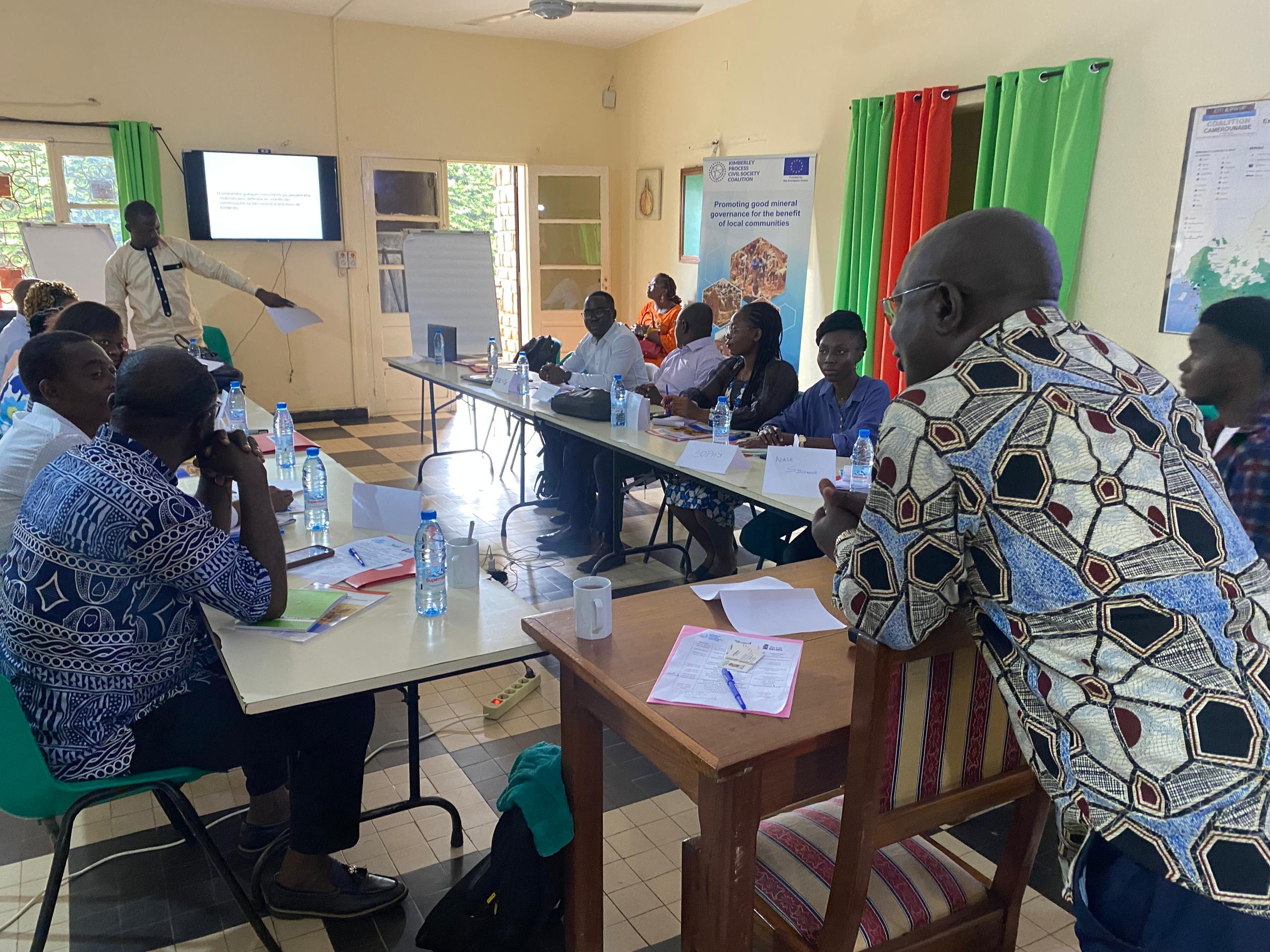By Leocadia Bongben
Diamond production in Cameroon is pegged at 2,000 karats per year, according to the Kimberly Process Certification Scheme statistics for 2021.
The country projects a production of 5000 karats per year, but this is still minimal compared with countries like the Democratic Republic of the Congo, Angola, and the Central African Republic. The question is, why become a member with such minimal production?
Napoleon Jaff Namenjo, Coordinator of the Network of the Fight Against Hunger, RELUFA, and member of the Kimberly Process Civil Society Coalition, stressed that though there is a discrepancy between the budget allocated and diamond mining, the little diamond extracted cannot be sold if Cameroon is not a member of the Kimberly Process.
He made the statement during a workshop on responsible for mineral governance reporting in Cameroon.
“Cameroon has a reputation to protect; the country was once accused of serving as a transit point for conflict diamonds, so there is a need to prove that it is not in illegal business, is part of the world forum, and responds to subregional cooperation,” Jaff explained.
The Kimberly Process is out to ensure rebels in conflict zones do not use diamonds to fight legitimate governments. The certification scheme was therefore established to ensure traceability and prevent rebels who obtain diamonds where they are fighting from getting certification for them to be sold.
The Kimberly process is facing new challenges, such as the limited definition of conflict, with civil society organizations demanding reforms to consider human rights and other actors in conflict.
Jaff explains that the Kimberly Process was, is, and continues to be relevant despite the demand for changes to suit the new context. “Civil society highlights loopholes in identifying the actors—the rebels, government actors, and human rights violations.”
Diamond extraction in Cameroon remains artisanal, and those who extract the precious gem must pay between $20,000 and $50,000 to obtain a mining license.
The sector faces the challenge of smuggling and the circulation of fake certificates, and if the control authorities are not vigilant, they slip through the system. The Kimberly Process, too, has not eliminated all the conflict diamonds as spelled on their website.
More than 50,000 people are involved in alluvial diamond production in Cameroon’s east region; paradoxically, diamond or gold mining does not seem to lead to better lives but presents social, environmental, and human rights challenges.

Identifying skills for responsible diamond governance reporting in Cameroon, the communicator of the Kimberly Process, CSC, and RELUFA, Enjeuma Esunge, said journalists can embark on investigative reporting based on the actions and commitments of officials to ensure they genuinely support regional cooperation efforts.
Access to certain meetings provides opportunities for journalists to gather information on what is happening on the ground by talking to stakeholders and decision-makers for reports, Esunge added.
The workshop on responsible mineral governance reporting in Cameroon, organized by RELUFA with the support of the KP CSC and Umverteilen, was an avenue for journalists to identify challenges and solutions to better reporting.

